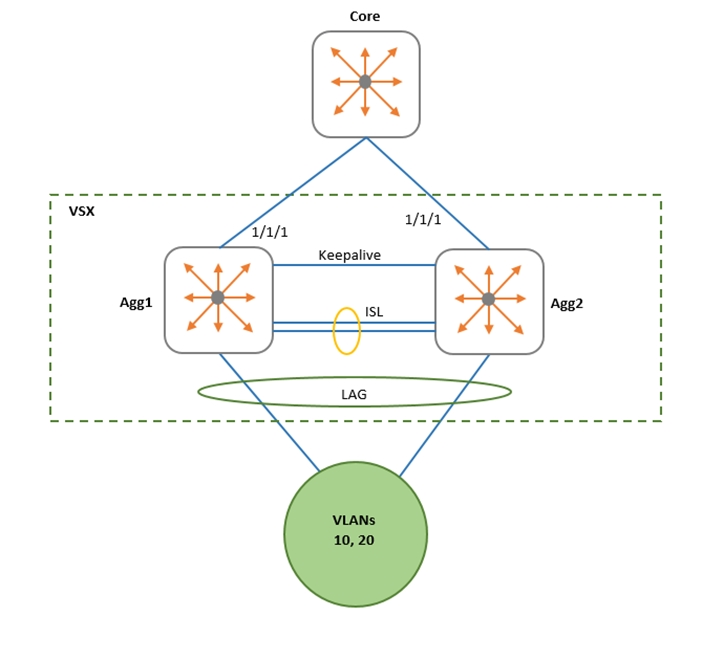Examine the network exhibit.

A network administrator is implementing OSPF on a VSX pair of aggregation switches: Agg1 and Agg2. VLANs 10 and 20 are connected to layer-2 access switches. Agg-1 and Agg-2 are configured as the default gateway for VLANs 10 and 20, with active gateway enabled.
What is the best practice for configuring OSPF on the aggregation switches and their connection to the Core switch?